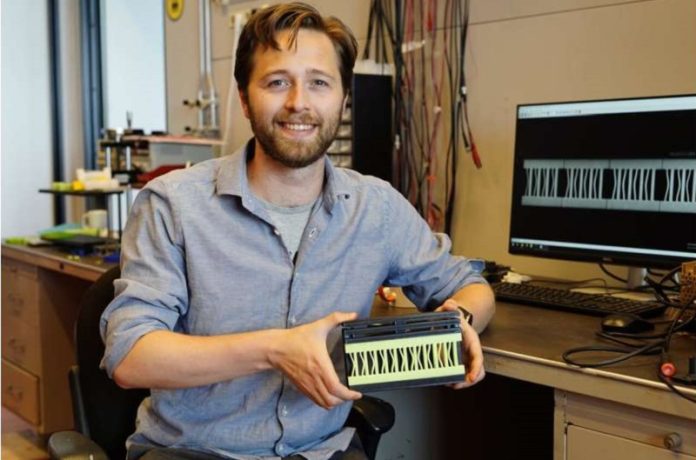
Physicists Martin van Hecke and Lennard Kwakernaak from Leiden University and AMOLF Amsterdam have come up with a rubber block that can count and even remember the order of touches.
Their innovative project has been published in the Physical Review Letters journal.
Kwakernaak, a doctoral student, has a passion for uncovering the hidden complexity in simple things.
His current project? A soft rubber block with 22 bars arranged in pairs that can count every time you push it.
So how does this work? Imagine all bars bend to the left, except for the first one that bends to the right. Every time you push the material, the first bar nudges the next pair to the right.
It’s like playing a slow game of dominoes, where each pair of bars represents a number, and this is how the rubber block counts up to ten.
This “smarty” rubber is what scientists call a mechanical metamaterial. It’s not just the stuff it’s made from that matters, but also how it’s shaped and structured.
With this kind of material, Kwakernaak and his team are exploring how simple stuff like rubber can be used to perform calculations, kind of like a basic computer.
In computer language, a bar snapping from left to right is like a bit changing from zero to one. Kwakernaak admits it’s not an easy task to shape the material in such a way that it behaves as they want it to.
They started with counting, which is the most basic computation.
The game here, as Kwakernaak explains, is to understand what you can and can’t do with the rubber and its bars.
But counting wasn’t enough. Kwakernaak discovered that by pushing the rubber with different strengths, he could design a lock-like mechanism that only completes its counting if you press it in a certain order and force.
What are the applications of this smarty rubber? One could be counting different kinds of cars on a bridge or even acting as a pedometer. Since the size of the material can be changed, it offers a lot of flexibility. Plus, it’s cheap, durable, and requires little upkeep, making it suitable for many potential applications.
Think of these metamaterials like shape-shifting heroes—they can transform and inspire new solutions. For instance, research on a material that folds like origami inspired the design of foldable solar panels on satellites.
Kwakernaak finds joy in the complexity hidden in simplicity. He’s keen to move onto his next project—designing an even more complex structure that operates not just in one direction, but across a plane.
“That,” he says, “would be like a simple computer.”
Follow us on Twitter for more articles about this topic.



